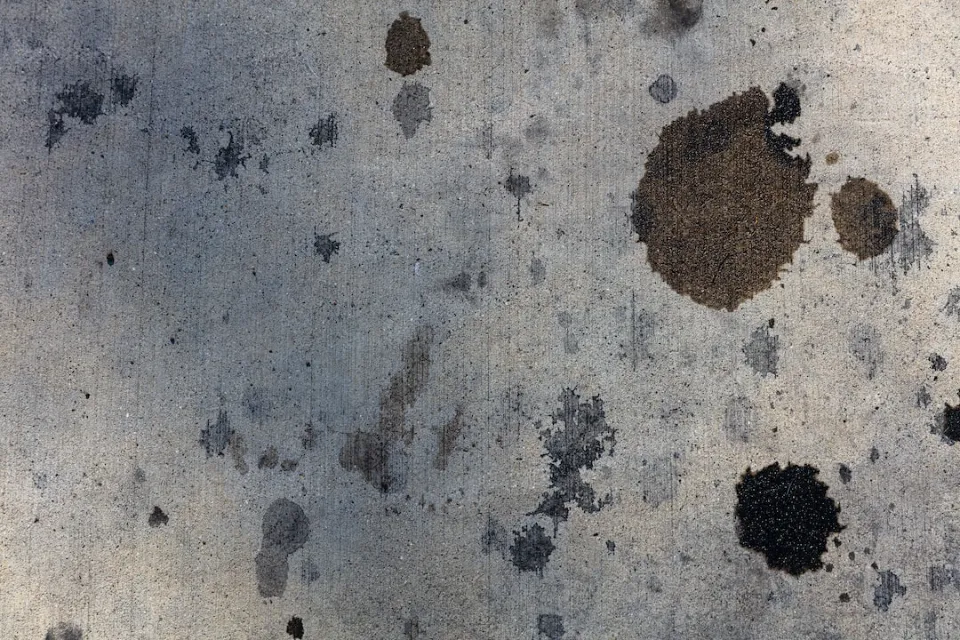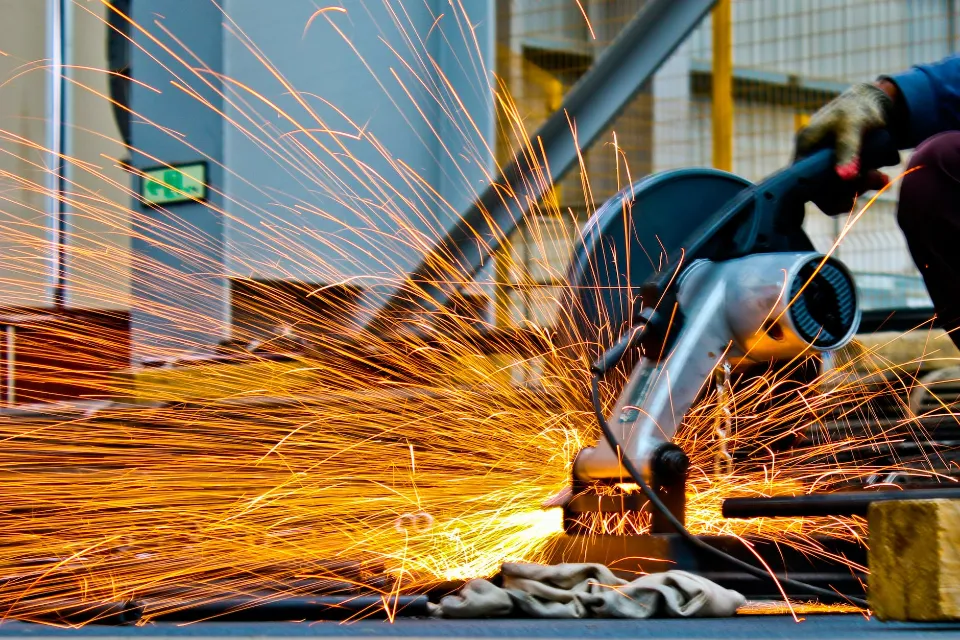
To lessen slips, trips, and unintentional falls, slip-resistant or non-slip footwear is designed. Non-slip shoe outsoles have grippy treads, keeping you stable on your feet while walking on wet and slippery terrains. Besides, you will learn why non-slip shoes are vital in our daily life.
Table of Contents
What are Non-Slip Shoes?
People who work in industries like restaurants, construction, healthcare, and other similar settings should wear non-slip footwear. These are obviously essential for anyone walking in wet conditions.
They differ from other types of shoes in a number of ways. The style, make, and pattern of the shoe sole are a few of these.
Materials
When shoes contact the ground, materials used in their construction come into play. Non-slip work shoes are usually softer on the outside, while their outsoles are typically made of rubber. This renders them slip-resistant, enabling an effective grip on slick, wet, and greasy surfaces.
Design
The degree of slip resistance that a shoe provides depends on its design. Work boots with good traction can be made with a special design.
Pattern
The right outsole pattern generates traction and gives the wearer a grip to prevent slipping in a variety of situations. Most non-slip shoes have interlocked tread patterns ingrained under the outsole.
There is no room for the liquid to enter the outsole thanks to an enclosed tread pattern. Instead, it directs liquid away from the shoe, keeping your foot secure in any position.
Wearing slip-resistant shoes can therefore be beneficial if you must spend a lot of time on your feet while walking or standing or if you must work on wet, greasy, or otherwise slick floors. Additionally, they can maintain stability and comfort in your calves, ankles, heels, and feet, which can lessen or eliminate fatigue and strain and provide all-day comfort.
What Makes Non-Slip Shoes?
What is footwear with traction? One kind of safety footwear is a shoe with good traction. The purpose of non-slip shoes, as implied by their name, is to keep wearers from slipping and falling on wet, oily, or other slick surfaces. They differ significantly from typical casual shoes in that they have a synthetic rubber sole that offers better traction and grip, making them ideal for use in healthcare settings by nurses and medical professionals.
While OSHA (Occupational Safety and Health Administration) requires workers in many industries to wear slip-resistant occupational footwear to prevent hazards, it doesn’t give much detail in terms of what “slip resistance” means. On the other hand, appropriate non-slip footwear frequently has sturdy, anti-skid soles and patterned tread for added traction on wet, greasy, or slick floors. For more information on how to determine whether shoes with rubber soles are slip-resistant, continue reading.
How to Tell Non-slip Shoes?
Slip resistance is indicated by several factors. To learn how to distinguish between casual shoes and non-slip shoes, continue reading.
They Are Labeled as “Slip-Resistant”
Checking the label is the quickest way to determine if the shoes are non-slip. Labels on shoes, boots and other footwear allow you to determine whether or not the item is slip-resistant.
Furthermore, a lot of non-slip shoe outsoles adhere to ASTM standards. This guarantees that the shoes can be worn safely on oily, dry, and wet surfaces.
Examine the Tread Patterns
To determine whether the shoe has a non-slip sole, it’s also essential to look at the tread pattern. On the outsoles of most shoes, there is some sort of tread pattern. As you look, you’ll see tiny circles, squiggles, or hexagons on the shoe’s outsole. These create friction, giving you a good grip on various surfaces without snagging the water. Typically, the smaller the tread pattern, the more powerful the slip resistance.
The shoes don’t offer much traction and won’t grip if there isn’t a tread pattern. The outsole is probably made of rubber or other materials that grip well and offer traction if it has a pattern or other design.
Check the Design of the Soles
Grip and traction are also greatly influenced by the shape of the outsole. Even if the shoes are advertised as being slip-resistant, you should still inspect the outsoles before buying them.
Look for sturdy EVA rubber outsoles with a rounded design on the sides when purchasing anti-slip footwear. EVA materials are man-made and have a resin or foam appearance. The midsoles and outsoles of non-slip shoes frequently contain them.
Wear Or Walk in Them
If you’re buying a new pair of non-slip shoes in a physical store, make sure you test them out to make sure they have all the anti-slip features. A wet floor is probably not something you’ll find in any store, but a shiny, slippery floor can have a similar effect.
Put the shoes on and take a few steps around wearing them. Feel the fit and the movement of your foot as you walk. Shop floors are frequently slippery, so you can quickly assess the shoe’s level of slip resistance.
By rubbing your hand over the outsole, you can also determine the shoe’s slip resistance. You shouldn’t wear shoes with a too-smooth sole because they won’t be slip-resistant.

Why Non-Slip Shoes Are Vital for Workers?
Slips, trips, and falls are the second most common type of fatal work injury and the third most common type of non-fatal injury, according to the CDC (Centers for Disease Control and Prevention). Additionally, slips, trips, and falls frequently result in time away from work—more than ten days on average for workplace falls of the same level.
Protective footwear is essential for preventing crippling injuries like fractures, sprains, strains, torn muscles, and dislocations. You can keep your balance and traction on a slippery surface by wearing non-slip shoes.
Workers in the construction, moving, or logistics sectors may require a specific style of slip-resistant boot or safety footwear. Workers can stay safe while performing heavy lifting or moving around on icy surfaces by wearing cleats, weight-resistant toe boxes, and heavy-duty industrial soles. Some boots are also made to lessen the possibility of an electrical hazard on wet surfaces.
How Do Non-Slip Shoes Work?
Slips, trips, and falls are avoided or lessened with the use of non-slip footwear. But how do non-slip shoes work?
Deeper tread grooves are found on athletic shoes that have higher levels of friction. Because they grip the ground, deep grooves can stop people from slipping and falling. The outsoles of the shoes with more grooves offer greater slip resistance.
Depending on the condition of the floor you’re walking on, you experience friction from each tread groove that ranges from 0.018 to 0.108 on average.
The shape of the outsole’s patterns can also affect how well the non-slip shoes grip the ground. Multiple designs and circular outsoles increase grip. On wet or oily surfaces, this is especially true. However, a flat design on your shoes prevents the liquid from moving away from the bottom of the shoe, increasing your risk of slipping and falling.
Anti-slip soles’ tread materials also aid in preventing slips. Strong traction is provided by high-quality rubber, which grips firmly on slippery and greasy surfaces.
How to Make Non-Slip Shoes?
If your shoes aren’t slip-resistant or at all, there are ways to make them so that they are so that you can avoid any unpleasant situations that might result from trips, slips, and falls. The non-slip tips listed below will help your shoes keep you firmly planted.
Apply Traction Spray
To make your non-slip shoes more grippy and slip-resistant, spray some traction on the bottoms. Traction spray can help revive your shoes’ outsoles if they are beginning to wear out.
Spray Hairspray on Your Outsoles
Spraying hairspray on your shoes’ outsoles is another way to make them more slip-resistant. After that, gently massage it into the soles. That is a practical and affordable method for making shoes shiny and non-slip.
Add a Mixture of Rubber Glue and Salt
You can make your shoes less slick by mixing rubber glue and salt. To increase the outsoles’ grip, this mixture was created. Salt and rubber glue should be combined in an equal ratio to create the mixture. Then, evenly distribute the mixture over your outsoles and allow them to air dry.
Make Grooves in Your Soles
Making grooves in your shoes’ outsoles can also help to increase their traction. There are lines on the soles from cutting them. Your non-slip shoes won’t slide off any longer because of the gripping effect of these lines.
Use Ice Grips
You can use an ice grip to stick the outsoles of your non-slip shoes together. The components used in rollerblade wheels are one example of this substance. Due to their strong, non-stick surface and improved traction, ice grips are effective at making shoes less likely to slip.
Rub Your Shoes With Sandpaper
If you want to smooth a surface for varnish or paint, you could also try rubbing the outsoles of your shoes with sandpaper. This works because it offers a better grip and increases the area of friction in the soles.
Re-Sole Your Shoes
Resolving your shoes is an additional choice. To fix your shoes, however, you’ll probably need to visit a shoe repair shop.
Setup a New Rubber Base
If the shoe sole is worn out, you can cover it with rubber tape. Covering the outsole is intended to prevent bare metal from showing while maintaining good traction.
Use Puff Paint
To make your non-slip shoes, you can also use puff paint. You can purchase puff paint online or at any children’s art and craft retailer. Apply a thin layer of puff paint to the bottom of your shoes to make the outsoles rough and slip-resistant to increase the slip resistance of your footwear.
Because it generates friction between the outsole and the ground you’re standing on, it works.
Let Them Wear Down
The soles of your shoes will become rougher after wearing them and walking in them for several days on uneven terrain. They might have more slip resistance as a result.
Non-slip shoe outsoles have grippy treads, keeping you stable on your feet while walking on wet and slippery terrains. Do you know more about non-slip shoes? The elements of non-slip shoes, how to make non-slip shoes by yourself?



